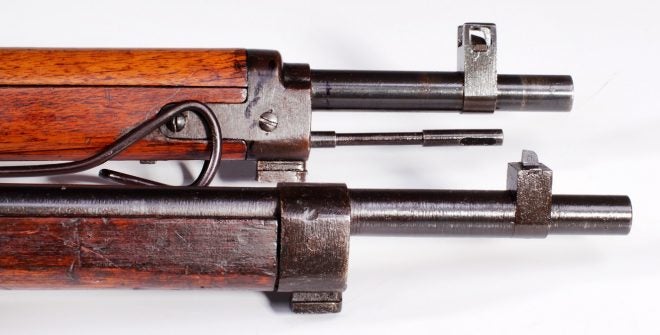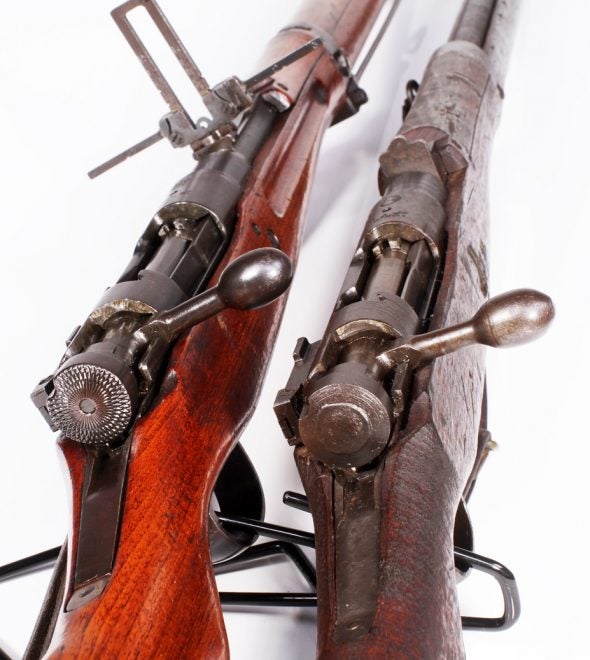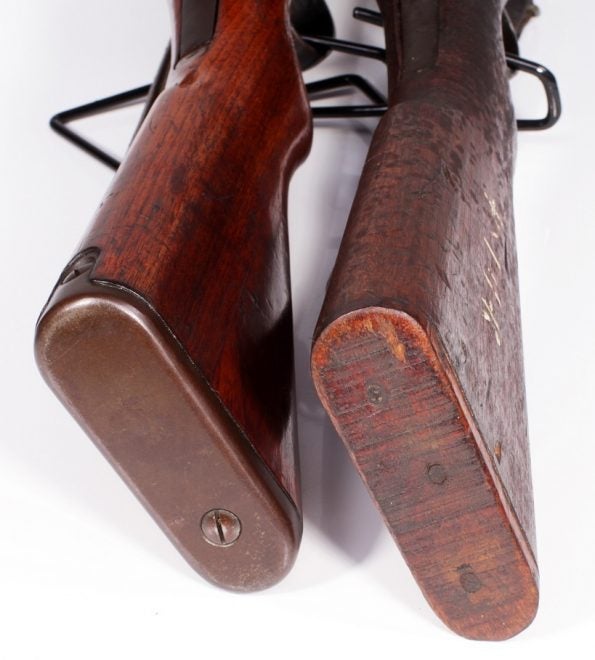The key to mass production is historically tied directly to the simplicity (and repeatability) of individual parts. As Japanese manufacturing facilities were bombarded and destroyed by U.S. forces during World War II, this became increasingly important for the continued production of infantry rifles like the Type 99.
While there is no official model change, the fingerquote “Last Ditch” Arisaka rifles were a final effort by the Japanese to turn out as many firearms as possible – which meant cutting a lot of corners. Here we’ll compare an early Type 99 against a late Type 99 to see a few of just which corners were being cut.

Type 99 Arisaka Rifles, Front Sight Comparison – Institute of Military Technology collection
At the muzzle we see that the difficult-to-produce front sight protection posts were removed entirely, the front barrel band was drastically simplified, and we can see the rough machine work on the barrel. The rifling inside, however, was reportedly unchanged (with the exception of the chrome lining).

Type 99 Arisaka Rifles, Handguard and Barrel Comparison – Institute of Military Technology collection
The monopod was done away with, as well as the upper handguard. The rear barrel band was simplified, and the cutout for the fore grip was deemed unnecessary.

Type 99 Arisaka Rifles, Receiver and Rear Sight Comparison – Institute of Military Technology collection
The rear sight shows a dramatic simplification. Fun fact: Those wings on the rear sight of the early rifle were for anti-aircraft fire, to be used in combination with the monopod for elevated off-hand shooting. Also, note the Chrysanthemum present on the the last-ditch rifle.

Type 99 Arisaka rifles, Safety Knob and Bolt Handle Comparison – Institute of Military Technology collection
At the back of the bolts we see that the usually-excellent knurling on the safety knob has been omitted, and the bolt handles were much more crudely turned. The generally-rough quality of the wood can be seen here as well.

Type 99 Arisaka Rifles, Buttplate Comparison – Institute of Military Technology collection
Finally, the buttplate shown here is simply a tacked piece of wood further indicating that the longevity of the rifle wasn’t much of a concern.
It’s important to note that these changes didn’t happen overnight. It’s common to see rifles with various features present or not present as that transition took place.
 Your Privacy Choices
Your Privacy Choices
